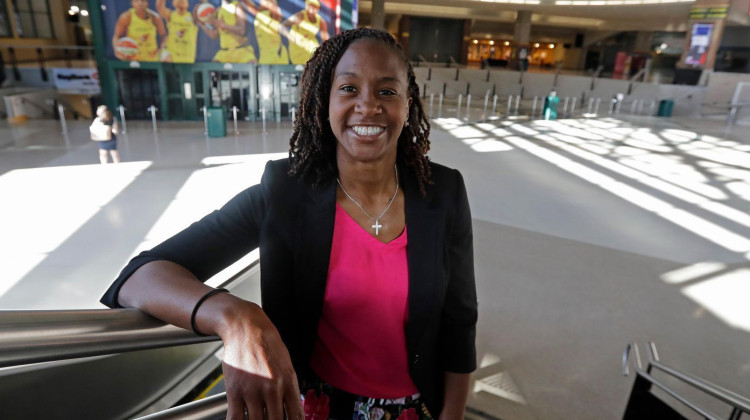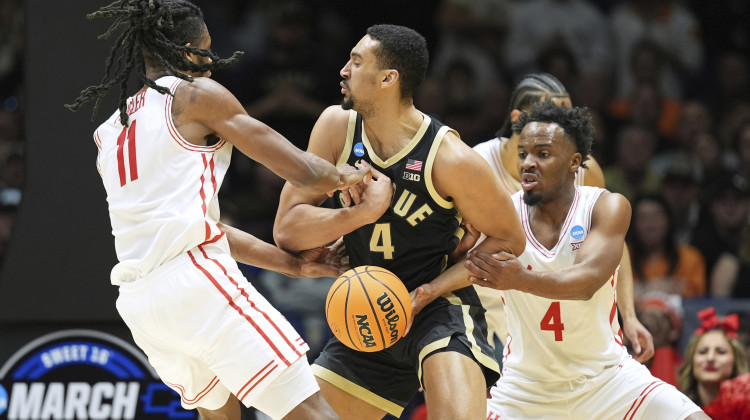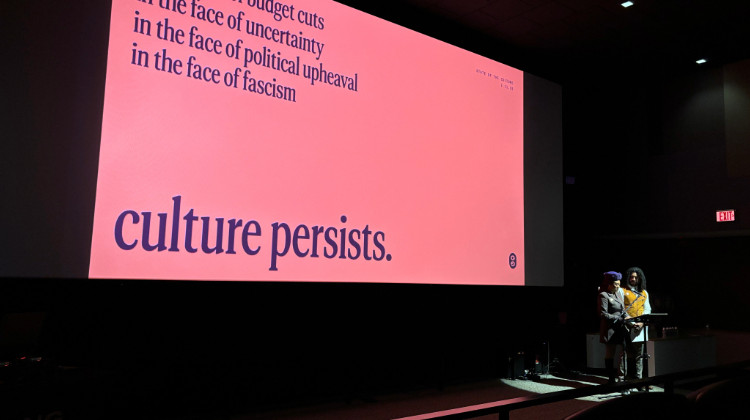INDIANAPOLIS -- Indy’s first publically commissioned mural was completed over 40 years ago through a program called Urban Walls. Now, the piece that has seen better days is at the center of an examination of public art in Indy during the modern era.
When it was created in 1973, the four-story mural made quite a splash at the corner of Delaware and Court in downtown Indianapolis. But today it doesn't make much of an impression for people like Susan Bentley.
"I work right there, I walk here almost every day and no, I’ve never noticed it," Bentley said.
Time has not been kind to the "Untitled" mural. Its radiant scarlet red, tangerine and bright blue hues have faded to burnt orange, mustard yellow, gray and dirty white. The swooping geometric arcs composed of triangles and rectangles seem tired somehow. Huge chips mar its surface, and half of it has been painted over because of water damage.
Forty-two years ago the piece was a part of an effort to revitalize the downtown core and help create Indy’s public art identity, and Roland Hobart was the man behind the mural.
Hobart had a stroke in 2013, and he's in assisted living now in Bloomington. But in the late 1960s, the Austrian-born artist who came to Indiana quickly made an impression on the city's scene. He created prints for Indy's Sesquicentennial. He won the mural commission in 1973 and says the blank canvas of buildings, right across from the City-County Building, one of the city’s only skyscrapers at the time, inspired him.
"I looked at architecture, I thought about one shape and then added to it… It’s like doing a painting… you don’t see it until it’s finished," Hobart explained.
Richard McCoy, art consultant and director at Landmark Columbus, became friends with Hobart a few years ago while researching the mural that has become a sort of passion project for him. The two talk about what the piece meant at the time.
"Tension, harmony, you can express those through color," Hobart said.
"So is your mural an intention? Is it happy," asked McCoy.
Hobart answered, "Yes, it’s my environment."
Today Indy boasts nearly 100 murals, 46 of them created when the Super Bowl came to town. Hobart thinks that a restored wall may resonate even more in 2016 than it did in 1973.
"I think today it would be even more appreciated, people are more cultured," Hobart said.
McCoy says he sees a lot of parallels between the downtown Indy of the early early '70s and today.
"It’s because we’re in that same mode with downtown," McCoy said. "We’re thinking about downtown, we want to be progressive we want to be in the future."
So what if the city's first mural could be part of that future and not just be some faded remnant of the past? Julia Muney Moore thinks it's in the right place for that -- in the heart of a $350 million redevelopment in what's now called the "Market East District" of downtown.
She is director of public art for the Arts Council of Indianapolis, and says she’d like to see a restoration the Urban Wall.
"Make it a part of -- I don’t want to say Rennaisance of public spaces because it never really went away -- but a rerecognition of the importance of public civic space," Muney Moore said.
McCoy is curating an exhibition, Public Art in Indianapolis: 1960s Through Early 2000s, that starts Jan. 19 at UIndy showcasing Hobart’s work and exploring other modern era projects. The school is also hosting a symposium on the topic of public art in February.
 DONATE
DONATE







 Support WFYI. We can't do it without you.
Support WFYI. We can't do it without you.